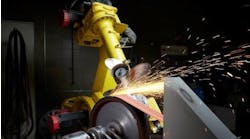What if you cut your R&D budget by, say, 50%. Other than screams from the R&D department reminiscent of the Psycho shower scene, would there be any noticeable effect? Presuming that R&D is supposed to generate innovation, which admittedly is a big presumption, the jury’s out. At least that’s one logical takeaway from a study shown by a fellow presenter at a conference last week. The research, conducted by venerable consulting house Booz & Co., asked a bushel of corporate executives what their companies spend on R&D and also what companies they think are innovative.* They then ranked companies on both metrics and, wonder of wonders, the companies that spend the most on R&D are not all perceived as the most innovative.
Now, I hear you mumbling that comparing rankings on an objective metric to rankings on a subjective one is kind of stupid. You’re absolutely right. It would have made much more sense to ask participants what percent of their revenue came from products introduced in the past year, two years and three years. The Booz study pits the pharmaceutical sector, which routinely outspends virtually every other type of company, against the perceptions of snazzy, in-your-face consumer products manufacturers like Apple, Samsung and Tesla. Does that make sense? No. But then again, by their own admission, Booz & Co. is not particularly innovative and the irony that they give advice on innovation is not lost on them.
On the other hand, the study does highlight that consistent innovation is the result of process and culture, not money. Heck, we should have known that from looking at U.S. school systems. We consistently pour more money per student into education than most other countries (objectively) and end up with middling results (also objectively). But despite the evidence, too many executive teams throw money at R&D and expect innovations that will leave competition in the dust to bubble up from the basement labs. Sorry, even if you cram Ph.D.s into a room like clowns in a Fiat, you won’t end up with more money-making new products.
Successful innovation—the kind that keeps you in front of the competition year after year—flows from a well-conceived process, reliably supported by top management. Show me an innovative company and I’ll show you a CEO wondering if there’s a way to stand on his head and spit nickels and a team that ushers masses of innovative ideas through a predictable process.
Brad Casper, who was CEO of Dial when that company was knocking out winning new products left and right, told me he always kept a full, balanced portfolio of ideas percolating. The portfolio consisted of three types of projects:
- Evolutionary products – these are the simple line extensions and upgrades that can be introduced quickly and keep your offerings fresh. Think iPod mini and iPod Touch. Not earth shaking, but consumers might like it.
- Revolutionary products – the market entries that will squash your competition and totally reorient customer expectations. Think iPod – the first one.
- Market-making products – totally new ideas that meet needs customers didn’t even know they had. Think Sony Walkman. (For those of you under 40, the Walkman was the original, portable music library.)
Casper’s approach is worth a second look. The portfolio classifications are genius, as is the subtle, but crucial fact that his portfolio was kept full. In other words, there was a steady, heavy rain of new ideas beating on Dial’s roof, rather than the summer squall of activity that most companies call innovation. Does your company generate novel offerings day in and day out, or does it try to make do with brainstorming sessions a handful of times each year? Do you keep all three buckets of innovation full, or has your pool of market-making offerings evaporated to nothing?
So, does R&D matter? Yes, of course it does. But as the Booz & Co. study correctly points out, how you spend is more important than how much, and the quality of your company-wide innovation process trumps the pedigree of your R&D team. You can out-innovate your competition without outspending them, and without a stodgy consultant, more scientists, or a Fiat.
*Bushel is a technical, market research term that means less than everyone, but more than a whole lot. It’s used by authors who can’t remember the sample size in a study presented the week before.
David A. Fields, author of The Executive’s Guide to Consultants (McGraw Hill, 2012), improves companies’ success with outside experts. For more help developing a culture and processes that make innovation work, contact the author at [email protected].



